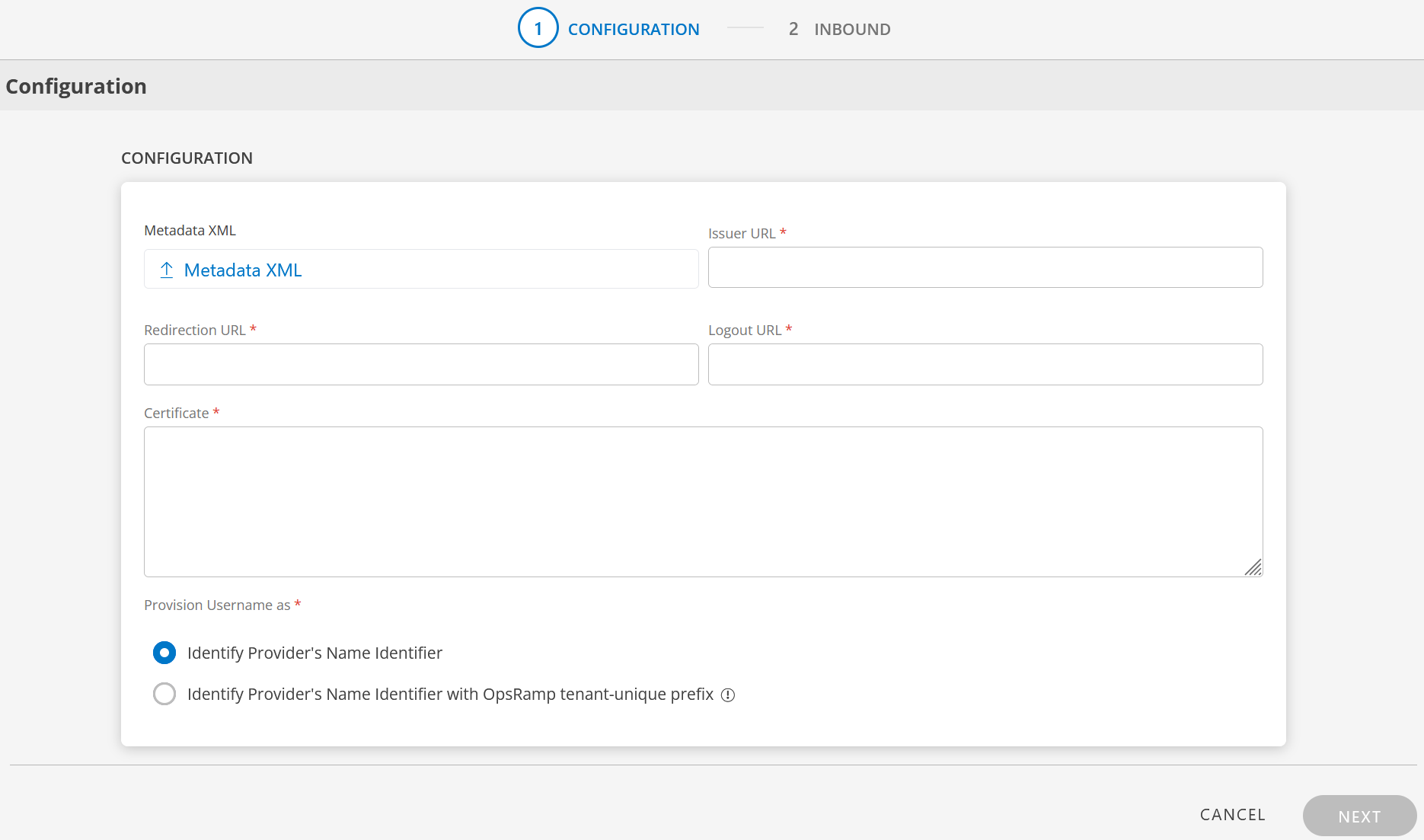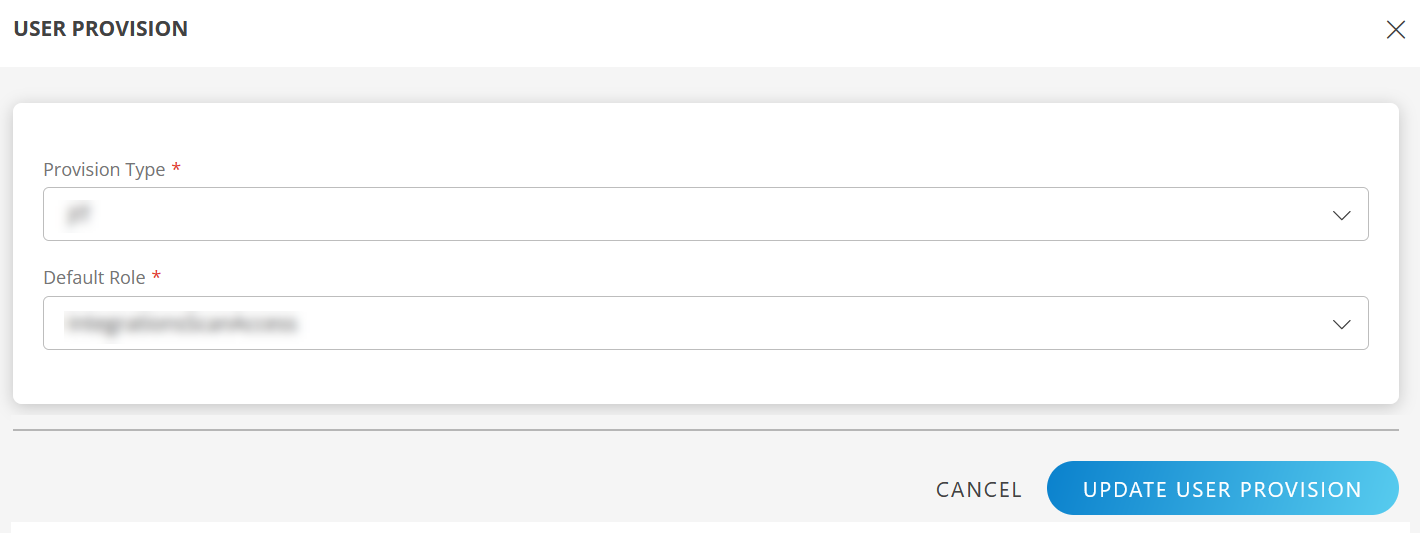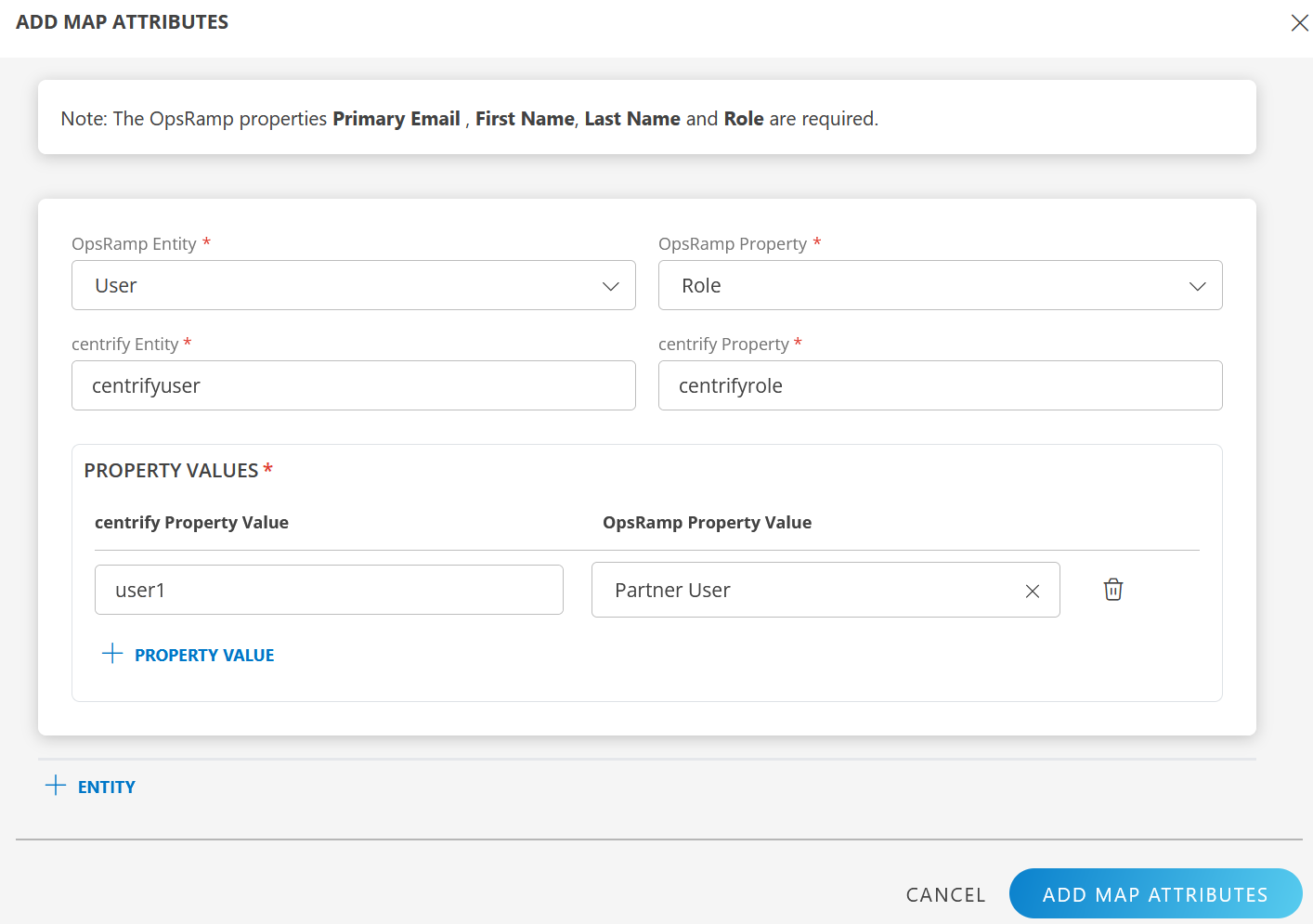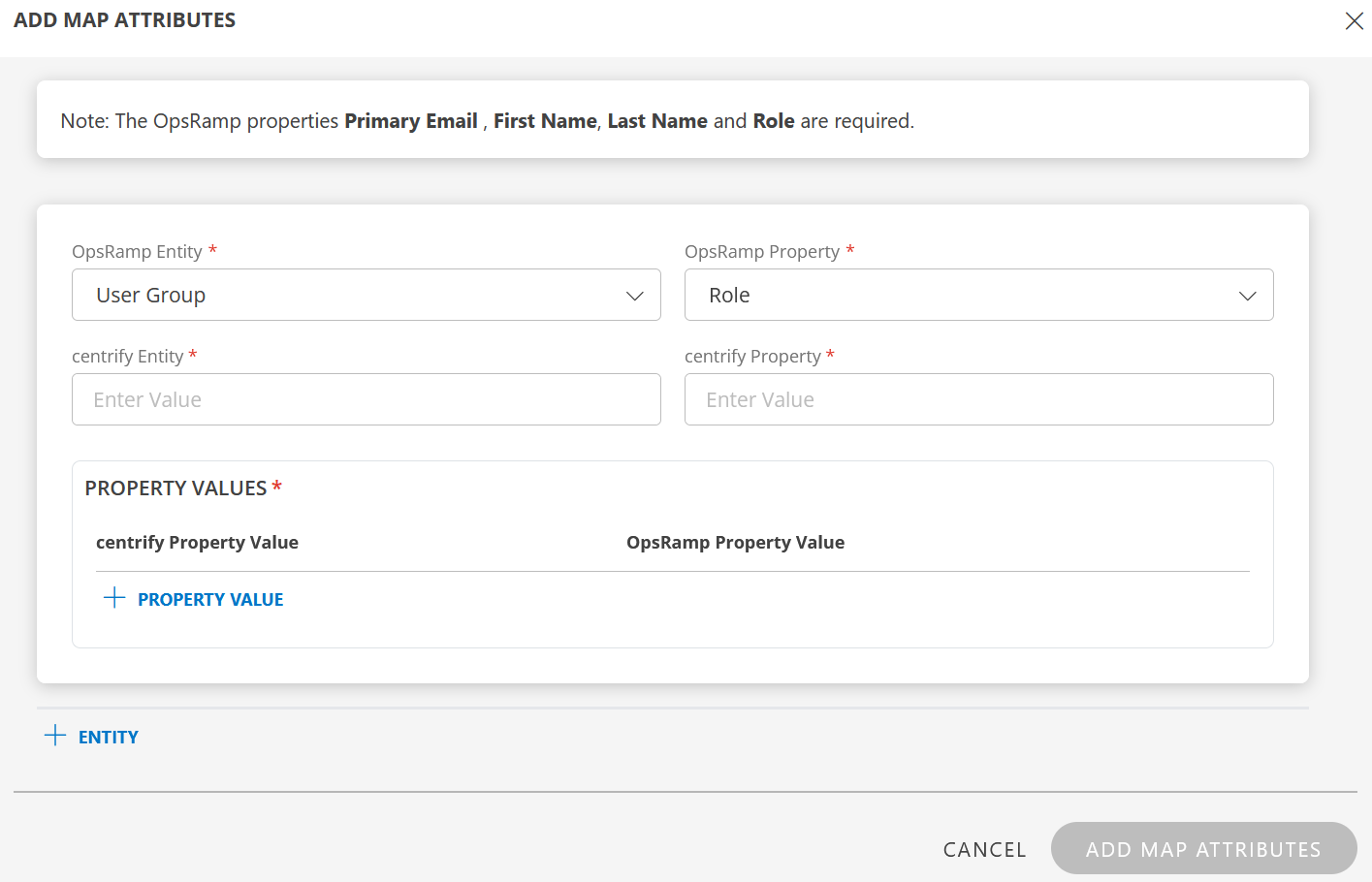Centrify is a comprehensive suite of free Active Directory-based integration solutions for authentication, single sign-on, remote access and file-sharing for heterogeneous systems.
Prerequisite
- Partners must register with OpsRamp to get OpsRamp login credentials.
- Provide your custom branding URL (such as
<yourwebsitename>.opsramp.com).
Centrify configuration
To configure:
- Log into Centrify.
- Go to Apps > Add Web Apps > OpsRamp.
- From Custom App, click the SAML template and click Add.
- In Service Provider Info, enter:
- Consumer service URL:
https://<opsrampclientbrandingname>.opsramp.com/samlResponse.do - Issuer:
https://<opsrampclientbrandingname>.opsramp.com/saml.do
- Consumer service URL:
- In Application Settings, enter:
- Sign in URL
- Error URL
- Sign out URL
- SAML Meta data URL
- Download the Centrify Signing certificate (saved with extension.cer). The certificate is used for OpsRamp configuration.
- Enter the following and Save:
- Description: Enter a description for SAML App.
- User Access: Enter permissions to the users to install the OpsRamp web app.
- Account Mapping: Map the added OpsRamp web app to the user accounts with a mapping script and
OpsRamp configuration
To configure SSO integration:
From All Clients, select a client.
Navigate to Setup > Account.
Select the Integrations and Apps tab.
The Installed Integrations page, where all the installed applications are displayed. Note: If there are no installed applications, it will navigate to the Available Integrations and Apps page.
Click + ADD on the Installed Integrations page. The Available Integrations and Apps page displays all the available applications along with the newly created application with the version.
Search for Centrify using the search option available. Alternatively, use the All Categories option to search.
Click +Add on the Centrify tile.

Enter the following information in the Configuration page:
- Metadata XML: Upload the XML file. This file will have all the information related to Issuer URL, Redirection URL, Logout URL, and Certificate. After you upload the Metadata XML file, these fields are automatically populated.
Alternatively, you can enter the information in the fields manually. - Issuer URL: Identity provider Issuer URL
- Redirection URL: SAML EndPoints for HTTP
- Logout URL: URL for logging out
- Certificate: x.509 Certificate
- Metadata XML: Upload the XML file. This file will have all the information related to Issuer URL, Redirection URL, Logout URL, and Certificate. After you upload the Metadata XML file, these fields are automatically populated.
Provision Username as: There are two ways to provision a user. Select the appropriate option:
Identify Provider’s Name Identifier option is selected by default. The user which is created in the SSO portal will reflect in OpsRamp.
Identify Provider’s Name Identifier with OpsRamp tenant-unique prefix: This option allows you to:
- Create usernames with a unique 3-digit alphanumeric prefix, that is generated automatically by the system.
- Install the same identity provider across multiple OpsRamp tenants.
Note: Once you enable this option and install the integration, you cannot revert your changes.
Example: There are three partners, Partner P1, P2, and P3. Each partner has usernames created with unique 3-digit alphanumeric prefix, like g0z.username1 for partner P1, p0w.username1 for partner P2, and t9q.username1 for partner P3.
Click Next.
In the Inbound page:
User Provision:- Select the following details and click Update User Provision:
- Provision Type: If you select provision type as JIT, JIT user is created during user login.
- Default Role: The required user role.

Define the following Map Attributes:
Note: The OpsRamp properties Primary Email, First Name, Last Name, and Role are required.
- Click +Add in the Map Attributes section.
- From the Add Map Attributes window, enter the following information:
User:
- Select OpsRamp Entity as User and OpsRamp Property as Role.
Role mapping is required for User and User Group.

- centrify Entity: Enter the value.
- centrify Property: Enter the value.
Similarly, do the role mapping for Primary Email, First Name, and Last Name..
Under Property Values: - centrify Property Value: Enter the value that is coming from centrify side (from the payload).
- centrify Property Value: Select the appropriate role corresponding to the centrify Property Value.
- Click Save. The mapping is saved and displayed.
To add more property values click +Property Value.
User the Filter option to filter the map attributes.

Similarly, map attributes for other entities.
User Group:
- Select OpsRamp Entity as User Group and OpsRamp Property as Role.

- centrify Entity: Enter the value.
- centrify Property: Enter the value.
Similarly, do the role mapping for Primary Email, First Name, and Last Name..
Under Property Values: - centrify Property Value: Enter the value that is coming from Azure side (from the payload).
- centrify Property Value: Select the appropriate role corresponding to the Centrify Property Value.
- Click Save. The mapping is saved and displayed.
To add more property values click +Property Value. - Click Add Map Attributes.
- Click the three dots (menu icon) available at the end of each row to edit or delete a map attribute.
If the Role is not configured in Map Attributes section, the Default Role provided in the User Provision section is considered for SSO.
- Click Finish. The integration is installed.